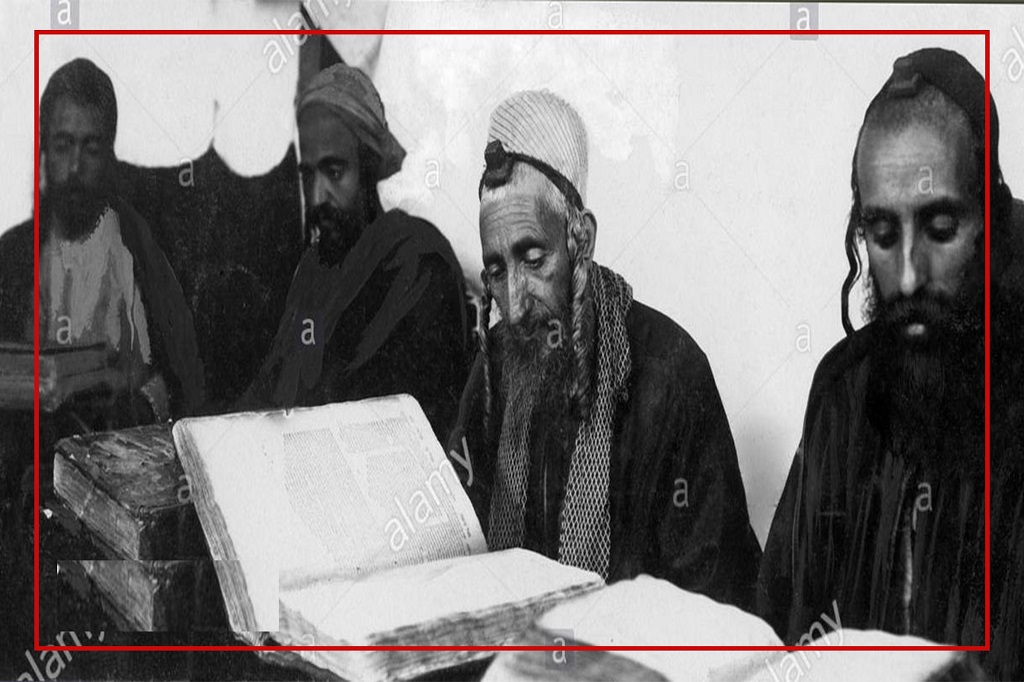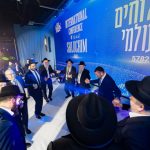Faraan Zionist Research Base; In the early Islamic society, there was a Jewish enmity in the form of scientific influence and the Prophet (PBUH) confronted it. However, we must also pay attention to the socio-political manifestations of this scientific influence. Basically, the settlement of the Jews in Medina was not to believe in Islam, but to oppose it and prevent the holy Prophet (PBUH) from moving to Jerusalem.
Owing to this fact, the Jews during the time of the holy Prophet (PBUH) could not carry out their deviant plans, but exercised their cultural and political influence in various ways after the demise of the holy Prophet (PBUH). An important part of this influence came through scientific influence. Part of this scientific influence was in the form of the Muslims who had studied in the Jewish centers. Today, this issue is done in the form of student scholarships or sending students abroad to study, which is analyzed under the title of educational diplomacy. One of these people is “Zayd bin Thabit”. He held important positions after the death of the holy Prophet (PBUH).
During the event of Saqifa, there was a quarrel between the helpers (Ansar) and the emigrants (Muhajirin). One said that the caliph was from them; another said that he was from them. From the fact that Sa’d ibn ‘Ibadah did not pledge allegiance to Abu Bakr, the Ansar too, were refusing to pay their allegiance to Abu Bakr. Zayd ibn Thabit was the first to take Abu Bakr’s hand and pledge his allegiance [1]. He told the Ansar, “He is your friend, he is the caliph of the Messenger of Allah. Pledge allegiance to him.” [2] This allegiance caused others to pledge allegiance to Abu Bakr.
It seems that Zayd’s service to the establishment of the caliphate of the caliphs did not go unanswered, and therefore he was given a high position in the rule of the caliphs:
. During the caliphate of Abu Bakr, Zayd was his secretary. [3]
. During Umar’s time, Zayd also held the position of judge, and Umar had allocated a certain payment for his services. [4] Zayd was so close to Umar to an extent that he used to put Zayd’s name before his own name in the letters. He used to write: “To Zayd ibn Thabit from Umar” [5]. This was something that was very unusual. Whenever Umar was traveling, he would designate Zayd as his successor in Medina [6] and in most cases when he returned from his journeys, he would give Zayd a palm garden. [7]
. During the time of Uthman, he was in charge of the affairs of the treasury, [8] the writing of the Qur’an, [9] adjudication [10] and the judiciary [11]. Likewise, in the absence of Uthman, he was his successor in Medina. [12] Zayd, along with Abu Asid Sa’di, Ka’b ibn Malik and Hasan ibn Thabit, defended ‘Uthman in 34 AH when the protesters intended to kill’ Uthman. [13]
Zayd ibn Thabit was accused among the companions of being a Jew since he also knew Hebrew. The most important reason for Zayd being a Jew is that he was educated in the Jewish centers and that he benefited from the knowledge that the Jews possessed. This was while the Jews lived in a closed society and the strangers, especially the Muslims, were not allowed inside them. So how could someone who was a Muslim study in the Jewish school and play with their children?
When ‘Abdullah ibn Mas’ūd’ was questioned as to why he could not recite like Zayd, he replied:
“When I learned 70 chapters of the Qur’an from the mouth of the Messenger of God, (PBUH), Zayd ibn Thabit was studying in a school with his hair braided.”
In regards to Zayd, Abi ibn Ka’b also says: “When I was learning the recitation of the Qur’an, Zayd was a child who played with the Jews in school with his braided hair.” [14]
Braided hair is an allusion to Judaism. As is now customary among the Jews, hair is braided and hung on both sides.
In regards to the character of Zayd ibn Thabit and his training by the Jews, Michael Lecker, writes: “”I am sure that for an indefinite period of time – about six or seven years, which was about the time of the death of Zayd’s father in the battle of Ba’ath and emigration – Zayd was educated by the Jews and probably grew up as a Jewish child.” [15]
According to him, the Arabs of Medina studied in a center or a school of the Jews, and since the literate Jews had to be taught Arabic from the Old Testament, they tried to convert the students to their religion, and seems one of these cases was the case with Zayd ibn Thabit. [16]
We have other Jews, such as Zayd ibn Thabit, who infiltrated the socio-political body of the Islamic system with the title and image of a scholar after the death of the holy Prophet (PBUH). Moreover, he sought to spread the deviant Jewish beliefs, so that today we have an important title called Israel, which is explained as false and deviant propositions in the tradition and commentary.
The most important of these influential Jews who used scientific influence as a tool of cultural and political perversion in the Islamic society are: Ka’ab al-Ahbar, Abu Hurayrah and Abdullah ibn Salam.
It is interesting to know that none of these people pledged their allegiances to Imam Ali (AS). They left Medina after the assassination of Uthman and went to Mu’awiyah in Syria. In the narrations, these people have always been rejected and severely criticized. Imam Ali (AS) and his special companions also confronted these people during the caliphate and disgraced them, but they had the support of the ruling political system.
The Messenger of God (PBUH) never gave these people a chance and explicitly removed them from the scene. Of course, some of them became Muslims after the death of the holy Prophet (PBUH), Nevertheless, the socio-political system after his demise did not continue this practice and thus provided the ground for their emergence and activity.
Scientific-cultural diplomacy and influence in the contemporary era
The process that took place in the early days of Islam is very similar to what is known today as public diplomacy. Part of public diplomacy is that the Western countries, with the aim of influencing the flow of a country’s elites, bring scholarships to their country and train them under their own education system.
It is natural that either these people stay in the Western countries or return to their countries. In any case, they are trained in the Western countries and have grown in their environment, culture and value system, and are a kind of forces, propagandists and executors of the programs of Western countries and the system of domination. Interestingly, during the US embargo on Iran, Iran was not sanctioned in this aspect and the Iranian students could still study in the US.
Today, in the Eastern and Islamic countries, we face a phenomenon as pro-Western elites and politicians, and when we see that many of the people in the Islamic countries in executive, managerial, and policy-making positions are Western-educated, we realize the importance and impact of this matter. This is one of the most important ways of influence that can be called scientific influence; an influence that extends to the political, social and cultural arenas and is a kind of postmodern colonization.
Another part of public diplomacy and influence is in the form of the presence of media forces, which in the form of journalists and reporters target the scientific-cultural and political community of the country and through this seek to influence the society. The experience of the country in the recent years confirms the claim that these media forces give information to the enemy’s spy services.
Sources:
[1] Musnad Ahmad ibn Hanbal, vol. 5, p. 187 and al-Mustadrak, al-Hakim al-Nishābūrī, vol. 3, p. 76; Siyār A‘lam Al-Nubalā’i, al-Dhahbi, vol. 2, p. 433.
[2] al-Siratu al-Habaliyah, vol. 3, p. 506; al-Sirat al-Nabawiyah, ibn Kathīr, vol. 4, p. 494; Tārīkh Tabarī, the translation, vol. 4, p. 1569; al-Sirat al-Nabawiyah, ibn Hishām, vol. 4, p. 494 (Tahqiq al-Saqa al-Abyari wa Shalabi, Beirut, Dar al-Kitab al-‘Alamiyah)
[3] Tārīkh Tabarī, vol. 4, p. 1569
[4] Akhbar al-Qudhat, Muhammad ibn Khulf ibn Hayan, vol. 1, p. 108; al-Tanbīh wa al-Ishrāf, al-Masʿūdī, p. 270.
[5] Tārīkh Dimashq, vol. 19, p. 317
[6] Siyar A’lam Al-Nubala’i, al-Dhahbi, vol. 2, p. 433, Tarikh Madinatu Dimashq, Ibn ‘Asakir, vol. 5, p. 451; al-Tabaqat al-Kubra, Ibn Sa’ad, vol. 2, p. 115 – 116.
[7] Tārīkh Dimashq, vol. 19, p. 318
[8] Tārīkh al-Kabīr, Muhammad ibn Ismail Bukhari, vol. 8, p. 373 (Beirut, Dar al-Kitab al-‘Alamiyah, 1398)
[9] Tārīkh Dimashq, vol. 4, p. 336
[10] Usd al-Ghābah fi marifat al-Saḥabah, Ibn Athīr, vol. 2, p. 127; Tabāqāt al-Kubra, Ibn Sa’ad, vol. 2, p. 275; Tārikh Ya’aqūbī, vol. 2, p. 62, Tārīkh Ṭabarī, vol. 6, p. 2323; al-Ṣaḥiḥ min Sīrat al-Nabī al-‘A’aḍam, vol. 6, p. 343.
[11] al-Ṣaḥiḥ min Sīrat al-Nabī al-‘A’aḍam, vol. 6, p. 343.
[12] Usd al-Ghābah fi ma’arifat al-Saḥabah, Ibn Athīr, vol. 2, p. 127
[13] Tārīkh Ṭabarī, vol. 6, p. 2212
[14] Al-Iḍāḥ, Izdī Nishabūrī, p. 519; al-Darajāt al-Rafī’’h, Seyyid ‘‘Alī Khan̄, p. 22
[15] Lecker, Michael, Journal of Near Eastern Studies, p259, The University of Chicago, Stable. 1997, vol. 56, no. 4.
[16] Lecker, Michael (1997), Journal of Near Eastern Studies, vol. 56, no. 4, p. 259 The University of Chicago, Stable, 1997.










